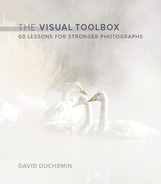Lesson 35. Light: Lens Flare
I read something recently on a list of “Here’s a bunch of things that make a photograph weak”—which always amuses me because the moment you tell me, “Don’t do it,” I want very badly to do it. The article explained how lens flare was a weakness in an image, a result of either cheap optics or lazy photography. Which made me laugh because I try very hard to achieve lens flare with some of my very best lenses. In fact, lens flare is an effect that motion picture animators go to great lengths to re-create in order to strengthen a sequence by adding realism and drama. The Director of Photography (DOP) for my favorite sci-fi series, Firefly, had such a hard time achieving the lens flare he wanted with the expensive cinematic lenses they were using that he took them back and bought cheaper ones. I assume it had something to do with the coatings, but either way, it seems funny that cinematographers—the primary visual storytellers of our generation—are using lens flare to strengthen their imagery while still photographers are telling each other to eliminate it. It’s an aesthetic. Sometimes it works, sometimes it doesn’t.
Canon 5D Mk II, 25mm, 1/400 @ f/2.8, ISO 400
Sun flares against the lens, pointing more clearly to the light itself, and reinforcing the spiritual theme of the image.

Nikon D800, 16mm, 1/250 @ f/13, ISO 200
Sun flare over an ice shelf in the Lemaire Channel, Antarctica.
Lens flare is created when direct light hits the front element of the lens, enters the lens and, in nontechnical language, bounces around and stuff, creating artifacts like rays and rainbows, and usually lowering the contrast of the image. The more elements in the lens, like a longer zoom—and, as I mentioned, the cheaper the lens—the more prone to flare it is likely to be. Stopping the light from hitting the front element, with a lens hood or by having someone block the light (off camera, preferably), can prevent lens flare. Opening the aperture wider and making sure the light hits the front element is a good way to ensure it.
But why lens flare? It makes us more aware of the sun, and the media we’re using to photograph it. It points it out. And, since Easy Rider came out in 1969, cinematographers have been incorporating it into our visual vocabulary. We associate it with an increase in drama and an increased feeling of luminosity. But more than that, it can be beautiful. The haze it creates in a scene can be soft and warm, lending romance to the scene. Or it can complement the presence of the sun in the frame, creating a connection between foreground and background.
Whether or not you like lens flare, you need to be aware of it if you’re going to prevent it or seek it out. And sometimes a backlit scene, especially when the sun is low, can’t be shot without it, so you might as well learn to control it, finding a camera angle that allows you to place the sun, and other elements, exactly where you want them. In other words, move around until the sun is blocked by something.

